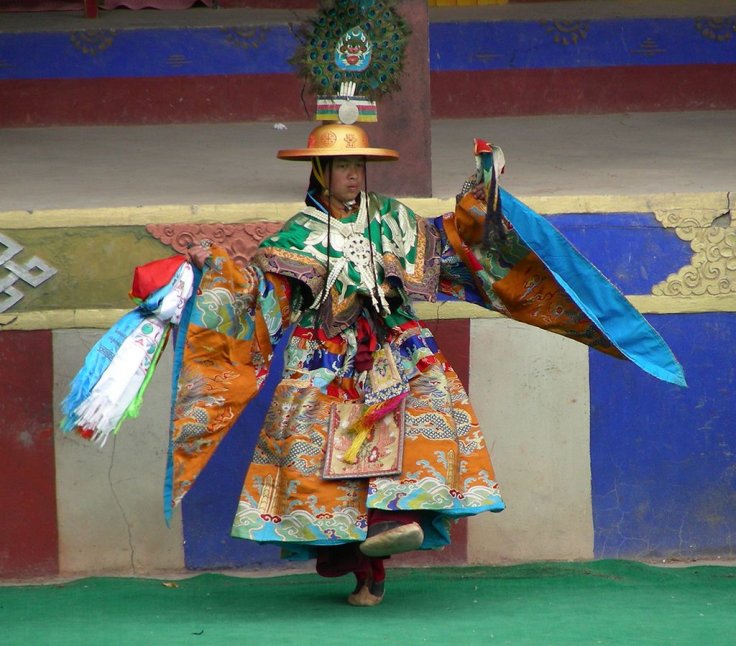Losar or Lo-sar means New Year in Tibetan language. 'Lo' means year while 'Sar' represents new. It is the most important festival celebrated by the Tibetans. This year, Losar 2148 will be celebrated between February 12 and 14.
The Tibetan calendar is a lunar calendar and the year includes either 12 or 13 lunar months, each beginning and ending with a new moon. The Tibetan new year celebration is one of the most festive periods of the year observed with many religious, cultural and merrymaking events for a week or two. It marks the end of winter and the start of the spring season.
The New Year Celebration

Losar celebration is the time when one could witness the best of the Tibetan culture. Men, women and children are in their best traditional attires. Colorful prayer flags can be seen on the top of the houses, monasteries and the hills around. But Tibetans in Tibet are not allowed to observe it fully, because of the occupation of China that considers such celebration as a threat to the communist regime.
However, according to the Tibetan calendar, the end of a three-day long festival is considered as the first day of the new year. On this day, many Tibetans pay their respects to Dalai Lama—the highest spiritual leader of Tibet and considered as a living Bodhisattva.
Tibetans also avoid spending money on the first day of the new year, as they believe that if they spend money on that day, they will be in debt for the entire year.

On the first day, which is called Lama-Losar, people visit monasteries, pay respect to the Lamas and receive their blessings. The second day is known as Gyalpo-Losar—"Gyalpo" means king representing authority—during which official public celebration takes place.
The third day is called Chokyong-Losar. The word Chokyong means the guardian deities. On the last day, prayer flags are hoisted and supplication prayers are read.
Tibetans decorate Chod-shom, the holy altars inside their residence, with offerings and auspicious items. According to Tibetans this is the way of thanking nature, gods and protectors.









